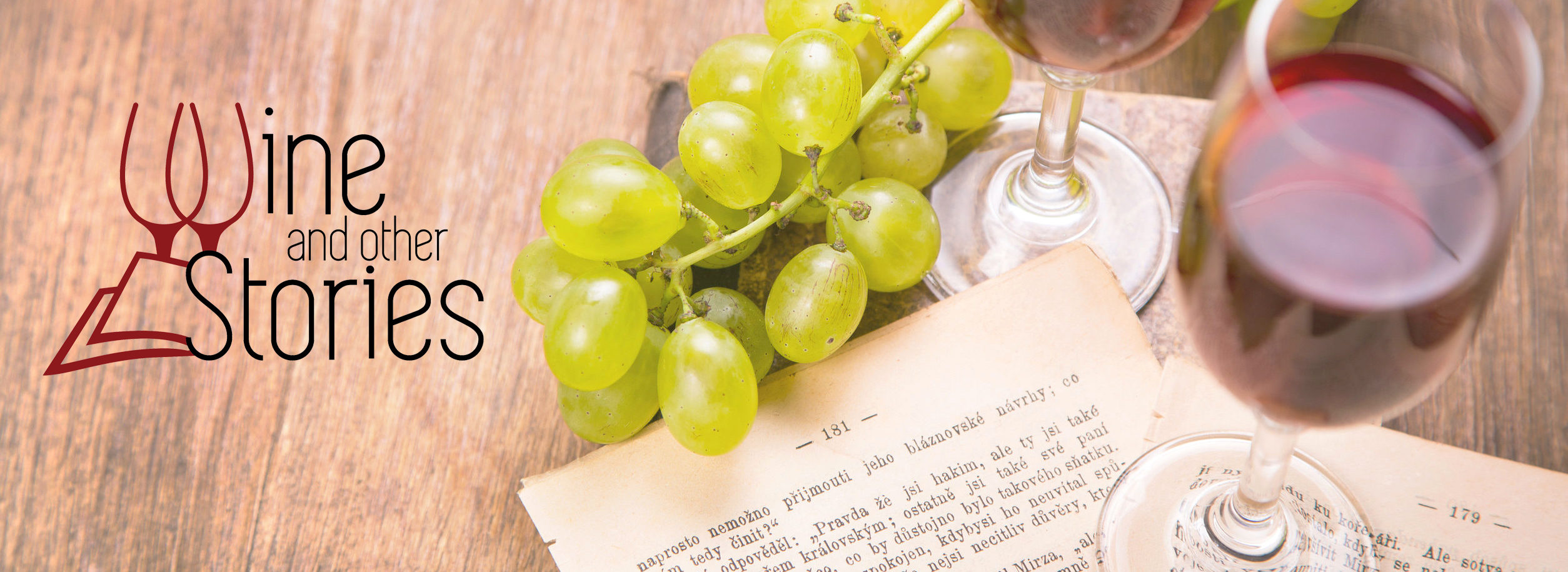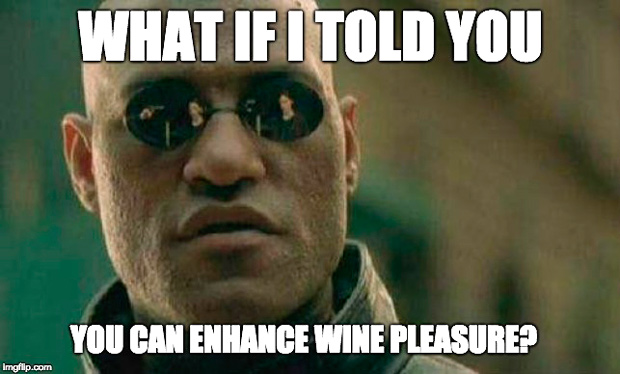Are you ready to unveil the mysteries of wine? Let me be the Morpheus for your journey… Learn how to taste wine with the PIQUANTE method
I’m sure you remember the Matrix quote above very differently. But what if I told you that it’s truly possible to enhance wine pleasure?
In this article (and those upcoming), I intend to be your Morpheus and blow your mind by changing the way you taste wine. I will answer three questions: What is wine tasting? How to taste wine? Why is it important for any wine lover to practice this fascinating “art”? This is the first of a four-part series about wine tasting, structured as follows:
- Introduction to wine tasting and outline of the PIQUANTE method (this article)
- PIQUANTE method: prepare and inspect your wine
- PIQUANTE method: swirl and sniff
- PIQUANTE method: examine the palate and draw evaluations
Two myths about wine tasting
Sometimes the mere expression wine tasting conjures skeptical frowns on listeners’ faces. Therefore, let’s debunk a couple of the myths surrounding the subject.
When reading “wine tasting” some of you might immediately envision pretentious connoisseurs in tweed waistcoats. While swirling their glasses, these experts utter incomprehensible descriptions and issue ostentatious judgements about their drinks. I can’t deny a certain amount of snobbery does exist in the wine world. However, I genuinely think that is not what loving wine is about. Arrogant people exist everywhere. The wine world has its share, and this is not greater than in any other sphere of interest. But ask yourself a question: will you really let a few snotty people hinder your wine journey, especially when such pleasures can be found?

The second myth is about confidence. Wine tasting can be intimidating. When I read my first wine tasting descriptions, I feared I didn’t have enough sensitivity (or even taste buds) to recognise all the flavours and characteristics mentioned. At that time, I was convinced only sommeliers and wine gurus were equipped with the extra-human sensory capabilities to catch all the nuances described in wines’ tasting notes. I thought I could never compete with those Vinous X-Men with special powers bestowed by Mother Nature. Of course I was wrong. Here’s the good news. Unless affected by rare medical conditions, everybody can become an expert wine taster. You just need three things: practice (with wine involved, that’s always fun – just remember to spit or exercise moderation), time (ok… a lot) and a systematic approach (this I can help you with – I told you I will be your Morpheus).
Why wine tasting?
What’s all the fuss about wine tasting? In all seriousness, as per the meme above, I firmly believe wine tasting will enhance the pleasure you derive from wine.
A systematic wine tasting approach allows you to:
- Focus on what gives you pleasure
- Understand wine – its components, structure, flavours
- Figure out what you like and why
- Remember wines and build sensory memory
- Talk about wine with other wine lovers
- Discern quality in wine
What is wine tasting?
You might wonder: what exactly is wine tasting? I particularly love Michael Schuster’s definition:
Wine tasting is the deliberate and considered act of scrutiny of wine […] the ultimate aim of which is to amplify your enjoyment.
In this regard, drinking and tasting wine are two different activities. Drinking is the hedonistic act of gulping wine with the sole intention of an instant and superficial gratification. It is limited to the physical and doesn’t require intellectual involvement.
Conversely, wine tasting is a more cerebral activity. It’s focusing all your attention on the wine, in a conscious effort to make sense of what’s in the glass. Dissecting the wine’s building blocks and identifying its structural components. Making connections between a wine, its place of origin, grapes and winemaking style. Wine tasting’s ultimate goal is a deeper pleasure, attained by putting the wine under the lens of a careful inspection.
Music offers an apt analogy to explain the difference between drinking and tasting wine. Often music is used as a backdrop to other activities. For example, you will almost always find music playing in the background of a supermarket, a TV advert or in a pub with friends. In those circumstances we may enjoy music subconsciously but it is just one thread in the complex tapestry of a particular moment. We rarely focus on the particular song played. It’s a nice soundtrack that we barely notice – the equivalent of just drinking wine.
The experience is completely different when we actively direct our attention to a song. We stop pursuing all other activities. Our attention and senses are fully converged on the music. Only then can we truly enjoy the song at its best. We are able to appreciate the song’s harmony, texture and timbre. The interplay of the different instruments. Lyrics and how the latter is related with the melody. We identify the song’s genre. If we become an expert, we can also discern the quality level of the composition. This attitude to music appreciation is the equivalent of wine tasting.

A wine tasting systematic approach: The PIQUANTE method
Now that I’ve explained the why and the what of wine tasting, I will end this article describing how to taste wine. As I mentioned before, anybody can become an expert wine taster provided they have three things: a willingness to practice, time and a systematic approach.
A coherent wine tasting method gives you the framework to consistently analyse any wine. This helps to avoid distractions and provides a focus on the elements of the wine that allows it to talk to us. Every wine worth drinking has something to say. Depending upon the wine’s complexity, it can be a single sentence… or a full book!
I call my personal systematic approach to wine tasting the PIQUANTE method. The acronym “PIQUANTE” stands for Prepare, Inspect, QUietly smell, Agitate, Nose, Taste, and Evaluate. I’d like to stress that there is no right or wrong method to taste wine. Mine is just a suggestion. Feel free to adapt it to your needs if you deem necessary. However, my advice is to stick to a systematic approach and maintain it over time. In this way, it will be easier to compare different wines and understand their styles and quality levels.
The steps of the PIQUANTE method to wine tasting can be summarised as the following:
- Prepare: before starting to taste, make sure the environmental conditions are right (enough light, absence of smell, etc.). Use an appropriate glass and calm your mind. You are the taster
- Inspect: focus on the look of the wine. Use your eyes and analyse the liquid’s appearance in terms of hue, intensity of colour, clarity, legs (or tears) – how it clings to the edge of the glass
- QUietly smell: without moving the liquid in the glass too much, give it a sniff. In this way you will recognise the subtle and more volatile aromas
- Agitate: give your glass a good swirl – but try not to spill the liquid. Trust me, you will need to practice this step!
- Nose: after swirling, dip your nose into the glass and gently inhale. The nose of a wine reveals precious information about its flavours (primary, secondary, tertiary), intensity and development
- Taste: take a sip of the wine, move the liquid through your mouth and aerate it (you will make funny noises, but hey – who cares?); analyse the structural component of the wine: sweetness level, acidity, tannins (if the wine is red), alcohol and body. Identify the flavours in the mouth – are they different from what you sensed from the nose? Gauge the concentration, complexity, and length of the wine
- Evaluate: Consider all the information gathered from the earlier steps (I hope you were making notes). At this point you should be able to determine the wine style, its quality level and ageing potential
What’s next
In my next articles dedicated to wine tasting, I will go through each of the steps of the aforementioned PIQUANTE method in much more detail. I will provide suggestions and plenty of examples to make the entire process as clear as possible.
It’s important you have familiarity with wine flavours and structural components before delving into the details of the PIQUANTE wine tasting approach. For this reason, I recommend a read of my previous articles:
What constitutes wine? Part 1 – Sweetness and acidity
What constitutes wine? Part 2 – Alcohol, tannins and body
What you need to know about wine flavours
It may also be beneficial to have a basic understanding of winemaking principles. For this, refer to The winemaking process in 15 steps – part 1 and part 2.
Theory aside, do you feel brave enough to undertake the quest into wine tasting? Now you have a decision to make.

This is your chance. After this, there is no turning back.
Take the blue pill, the story ends. You keep quaffing your wine as you always did and believe that wine is just another drink to get drunk.
Take the red pill and discover a wine-wonderland. I will show you the beauty and depths of the wine world. Knowing how to taste wine is the gateway to unveiling this universe.
The second part of my wine tasting series is now available here.


Comments · 8